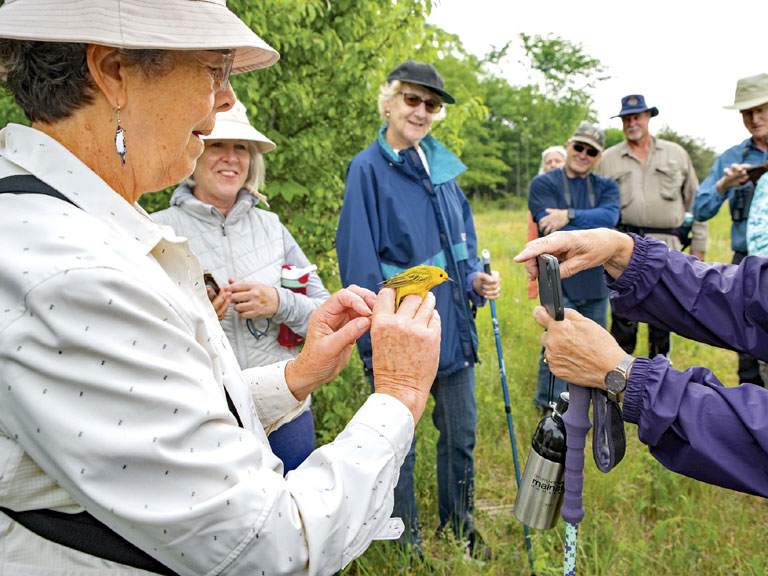County News
South shore stroll

Morning hike explores the ecology of Prince Edward Point
SSJI board vice-president Cheryl Anderson led a group of about 15 people on a stroll at Prince Edward Point last Saturday morning to explore the ecology and history of this environmentally significant area. Prior to the arrival of United Empire Loyalist settlers over 200 years ago, the area was a mixed hardwood forest with oak, maple and white pine, and was the seasonal home to Indigenous people. The Loyalist settlers established a fishing village and began clearing the land, first for farming and then for livestock. While the fishing industry flourished until about 40 or so years ago, the poor alvar-type soil meant it was unsuitable for farming and efforts there were largely abandoned. The land is slowly reverting back to forest, with the former fields turning into juniper and cedar meadows and the slow return of hardwoods. As with many areas, invasive species like garlic mustard and dog-strangling vine are widespread. This region has been designated as a Natural Wildlife Area, and is one of three monarch butterfly reserves in Canada. The prevalence of dog- strangling vine is a concern, since it bears a biological resemblance to milkweed and monarch butterflies will lay their eggs on its leaves. Unfortunately, the leaves contain no nutrients for the larvae so they will perish.
Saturday’s walk began at the last remaining fishing dock. At one time dozens of families made their living here, but there are now only decaying traces of their presence. The ice storage barns disappeared in the 1970s. The fishing huts have fallen into disrepair or have been obliterated by time. The rusting remains of a net drying rack is a silent testament to a vibrant past. On the plus side, nature is returning, albeit slowly. It is a stop-over site for migrating birds and also a breeding area for resident species. While the late spring foliage kept the birds hidden from view, the Merlin app on Cheryl Anderson’s phone helped identify eight or nine species from their call. Hikers saw more than a few snakes, great blue herons in flight, and a great egret foraging on the shoreline. There were some remnants of the farm settlers including a partial cedar rail fence and a pile of boulders that may have indicated the foundation of a long-gone house.
The South Shore Joint Initiative have a number of events planned in the near future. On Friday evening, weather permitting, there is a night sky viewing event. A webinar on the life cycle of the monarch butterfly takes place on June 23, and there is an ongoing art show and sale at the Eddie Hotel and Farm Farmers’ Market. A fundraising Gala will be held in October at the North Marysburgh Town Hall. The restoration project at the Hudgin House is continuing, and the SSJI is in early discussions about a footpath from Point Petre to Point Traverse. For more information, please visit ssji.ca

Comments (0)